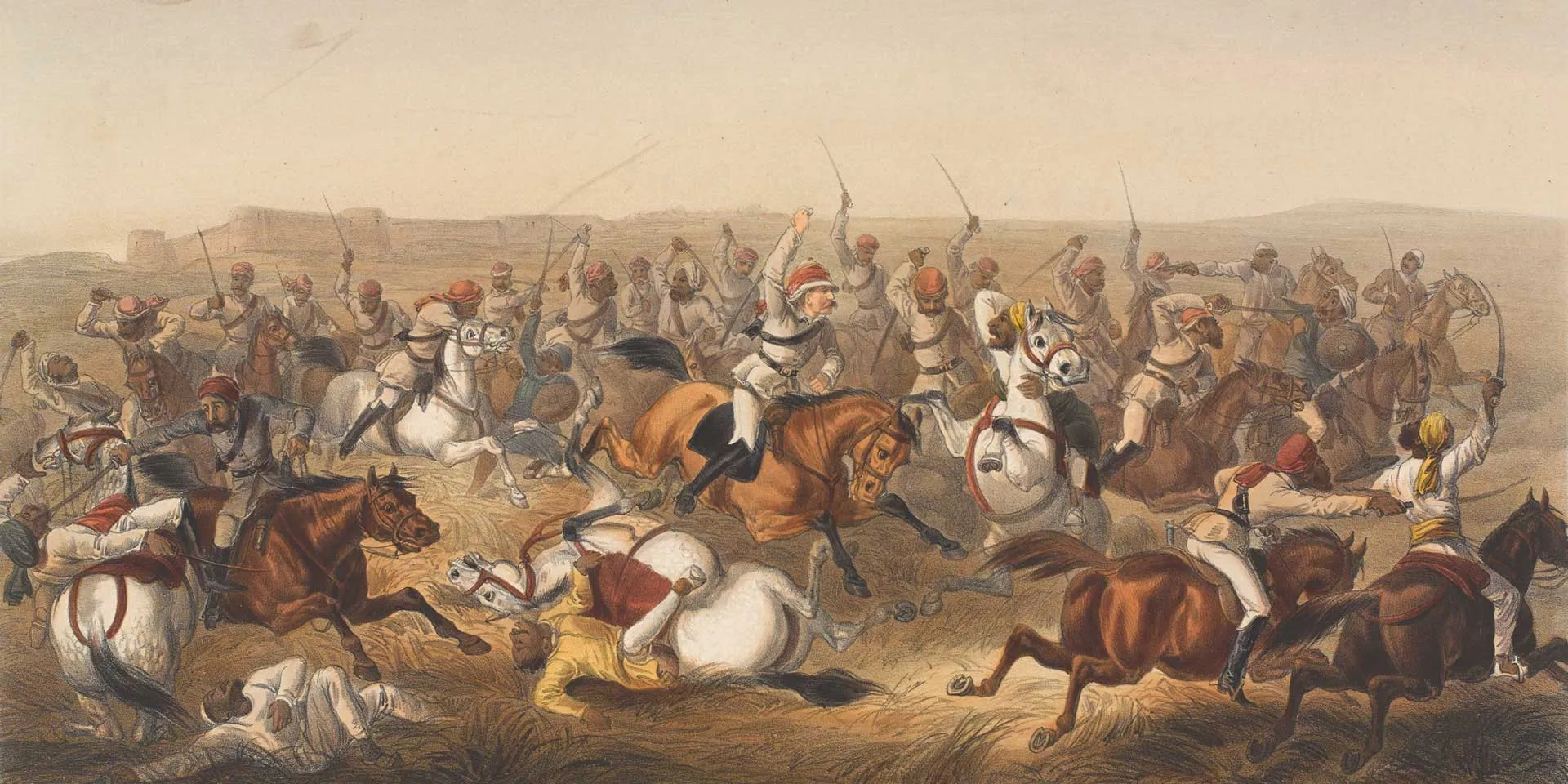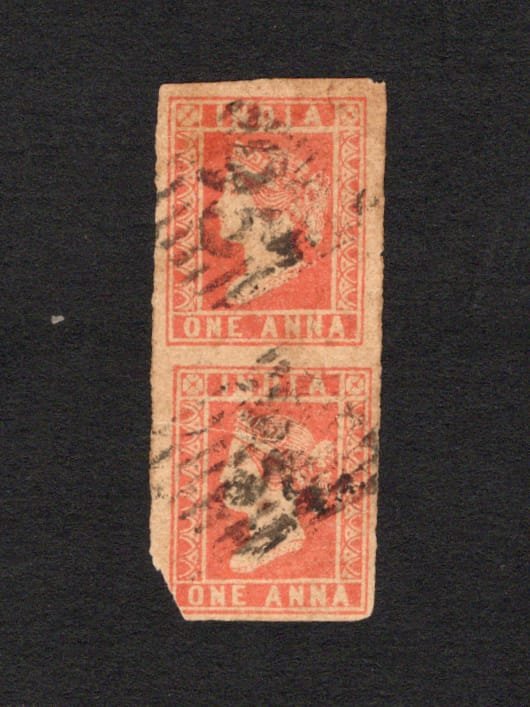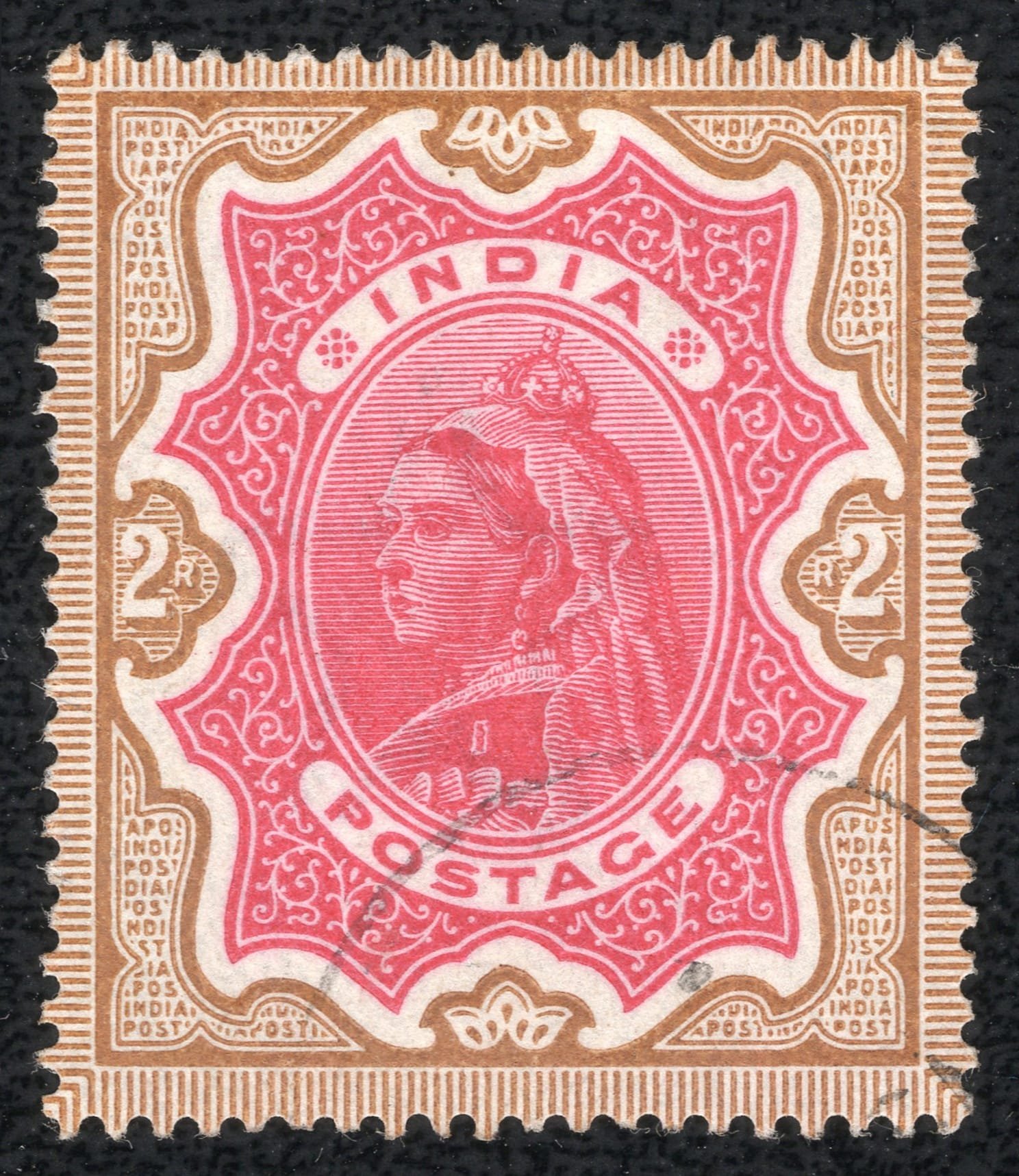British India
British India [EIC and The British Raj]
1757-1947
The British Raj, a term denoting British rule over the Indian subcontinent, spanned from 1858 to 1947 and profoundly influenced the region’s political, social, and economic landscape. This period, characterised by imperial ambition, administrative control, and the impetus for national independence, remains a pivotal chapter in Indian history.
The Beginning
Britain’s interest in India began with the East India Company (EIC), a trading corporation founded on 31 December 1600. It used a royal charter by Queen Elizabeth I to give it a monopoly on English trade in the East Indies.
The EIC began by focusing on trade with the spice-rich islands of Southeast Asia but faced stiff competition from the Dutch East India Company. It later shifted its attention to India.
In 1615, the EIC secured permission from the Mughal Emperor Jahangir to establish trading posts in Surat, leading to a growing presence in India. Over time, it set up factories in Bombay, Calcutta, and Madras.
Battle of Plassey (1757)
Robert Clive and Mir Zafar after the Battle of Plassey, 1757. By Francis Hayman.
National Portrait Gallery, London.
Expansion (1700s)
Initially limited to trading, the EIC took advantage of the political instability in India following the decline of the Mughal Empire and started maintaining standing armies to ostensibly guard its business interests. The competition for India brought it into conflict with other European powers and then with the Indians themselves.
The EIC was involved in a series of conflicts with the French East India Company in what was known as the Carnatic Wars (1746-1763). It emerged victorious and was successful in containing the rising influence of the French in the Southern parts of India. This victory created the base for which the EIC could launch further expansion in India.
EIC soon ran foul with Nawab Sirajuddaulah of Bengal. The deteriorating relationship resulted in the Battle of Plassey (1757), where the Company defeated the Nawab and his French allies, capturing the vast and rich land of Bengal, the first significant stronghold of the British. In Buxar (1764), the Company defeated an Indian coalition of the Mughal Emperor and his Nawabs in Bengal and Bihar and were granted taxation rights for Bengal, Bihar and Orissa. Thus began the Company rule, as it came to be known later.
Conquest of India
During the decades to come by, the company expanded its territories in India, established administrative systems and maintained a private army, becoming a quasi-government in its controlled areas. It defeated major Indian states one by one, like Mysore, Marathas, and then the Sikhs, prompting many smallers states to join its fold as protectorates.
It held a monopoly on trade with India and China, particularly in commodities like tea, cotton, silk, and opium. The company’s opium trade with China contributed to the Opium Wars in the 19th century.
Between 1757 and 1850, the East India Company had gained absolute control over the subcontinent, fielded one of the largest standing armies in the world and controlled the lives of 200 million people.
At the same time, the British government started attempts to regulate and control the Company through acts like the Regulating Act of 1773 and the Pitt’s India Act of 1784.
The Indian Revolt of 1857
Hodson’s Horse at Rhotuck, 1857. William Simpson, E Walker and others. 1857-1858. National Army Museum, London
The Revolt of 1857 and End of Company Rule
The Indian Revolt of 1857, also known as the First War of Independence, was a major uprising against the EIC’s rule, a tumultuous event that came to within a hair’s breadth in succeeding its ambition to expel the Company from the Subcontinent. Although it was suppressed after two years and much bloodshed, it exposed the flaws in the company’s administration.
In 1858, the British government assumed direct control of India, marking the end of EIC’s political role. The Government of India Act 1858 transferred all administrative powers to the British Crown. The company continued to exist in a diminished capacity, primarily managing the East India College and pensions. It was officially dissolved in 1874.
The British Raj
The Government of India Act of 1858 formally ended the rule of the East India Company and brought India under the rule of the British Monarch (Queen Victoria), represented by the Viceroy of India. The extent of the empire expanded beyond the boundaries of the subcontinent, including Burma, British Somaliland, Ceylone and the Strait Settlements. The Trucial States of the Persian Gulf were also part of the empire, as princely states, until 1947.
Structure of the Raj
With the governance under the crown, India became a Crown Colony, officially called the “Indian Empire”. It was governed by the Viceroy of India, who represented the British monarch. The Secretary of State for India, based in London, oversaw colonial administration.
The British Raj included present-day India, Pakistan, Bangladesh, and Burma (until Burma was separated in 1937). It consisted of British-administered provinces and princely states, which were semi-autonomous and ruled by local monarchs under British suzerainty.
The Raj implemented a centralised bureaucracy and civil service, with the Indian Civil Service (ICS) becoming the backbone of the administration, staffed predominantly by British officials, although Indians were gradually included.
India was integrated into the global economy as a supplier of raw materials (e.g., cotton, tea) and a market for British manufactured goods. Infrastructure such as railways, ports, and telegraph systems was developed, but economic policies largely served British interests.
British education policies promoted English as a medium of instruction, fostering a class of English-educated Indians. Indian society saw significant reform movements during this time, influenced by Western ideas and opposition to colonial rule.
After a period of relative calm, the British Raj saw the resurgence of nationalistic sentiments among Indians, disenchanted by what the Indians considered as the loot of India and a general dislike of being under foreign rule. The national movement gained momentum over decades, culminating in the folding up of the British Raj, a partition of India and the formation of independent India and Pakistan.
Stamps of British India
The East India Company established the first formal postal services to facilitate administrative communication. Warren Hastings, Governor-General of India (1773–1785), initiated regular postal routes and organised postal runners. By the early 19th century, the postal system expanded significantly under British control. In 1837, the Post Office Act was passed, creating a more centralised and standardised postal service.
Scinde Dawk
The Scinde Dawk were the first adhesive stamp issued in Asia. Introduced in 1852 by the British Governor of Sindh (now in Pakistan), the stamps were originally designed to facilitate postal services across the vast and sparsely populated province. The stamps came in three variations: red, white, and blue, with the red version being the most well-known. Made from embossed sealing wax, the red stamp was fragile and prone to damage, leading to its eventual replacement by the white and blue varieties made from thicker materials. The design featured the East India Company’s emblem and inscriptions in both Persian and English.
The First Pan India Postage Stamps
The Indian Post Office Act of 1854 reorganised the entire postal system, introducing a uniform postage rate and extending services to the public. The act also formalised the creation of a Director General of Post Offices to oversee operations.
The first postage stamps of India were issued on October 1, 1854. These were imperforate and printed in various denominations (½ anna, 1 anna, 2 annas, and 4 annas). These stamps were printed in Calcutta and featured the profile of Queen Victoria. There were no perforations or gumming, and the stamps would need to be cut out from the sheet on which they were printed.
In 1855, De La Rue & Co., London, created a new design for the Indian stamps. These stamps were recess-printed and carried a better-etched image of Queen Victoria in an oval vignette inside a rectangular frame. The stamps carried the inscription EAST INDIA POSTAGE and were in use even after the Queen resumed control of India in 1858.
The Post Office Act XIV of 1866
The Post Office Act of 1866 introduced reforms to correct some of the deficiencies of India’s postal system. Lower rates were set for steamer mail to Europe, and a similar reduction occurred for inland mail within the country. The new regulation also sought to remove special privileges previously employed by the EIC officials. Stamps for official use were prepared and accounted for to prevent misuse. These stamps started being overprinted with ‘Service’ to indicate their official purpose.
The Empire of India
On 1st May 1876, Queen Victoria assumed the title of the Empress of India, and the crown decided to rule directly with a Governor-General appointed to represent the writ of the Monarch in the subcontinent.
The Company was finally completely out of administration. The words ‘EAST INDIA’ were dropped from the stamps, and INDIA entered the inscriptions. The new designs, though not as fine as the Company ones, were more standard and economical to produce. Efforts were made to prevent forgeries and white gum became prevalent. Perforations were done using comb machines measuring a gauge of 14.
Jubilee lines appeared in 1887. These lines were added to the plate to protect the edges of the plates from wear. New denominations were issued with values of 1 anna and 6 pies, 3 annas and 4 annas and 6 pies.
When the postal rate to Britain was reduced from 4 and a half annas to 2 and a half annas, the older stamps were overprinted to make up the deficit. Higher value stamps in Rupee denominations were issued in 1895 with the design created by Heinrich von Angeli, an Austrian painter.
King Edward VII
King Edward VII was proclaimed the emperor of India in a grand coronation durbar held in Delhi in January of 1930. De La Rue & Co. designed new stamps to commemorate the ascension of King Edward VII. They were similar in design to the later Victoria stamp. The portrait of the king has a crown over his head, larger in the first stamps and smaller later on. All stamps were printed with a single-star watermark and jubilee lines on the edges of the sheets.
The stamps were printed in the denominations of 3 pies, ½ anna, 1 anna, 2 annas, 2 annas 6 pies, 3 annas, 4 annas, 6 annas, 8 annas, 12 annas, 1 rupee, 2 rupees, 3 rupees, 5 rupees, 10 rupees, 15 rupees, and 25 rupees. For the first time in India, stamps were also published in booklets, for ½ anna and 1 anna. These booklets were made in Calcutta.
Official issues of King Edward VII stamps were issued in denominations from 3 pies to 25 rupees. Like the Victorian stamps, these stamps were overprinted ON H.M.S. The later issues came with the inscription POSTAGE AND REVENUE and were similarly overprinted.
King Edward VII died on 6th May 1910 and the reign passed on to his son, King George V.
King George V
George V was proclaimed the Emperor of India on 16th December 1911, and a lavish coronation was held at the Delhi Durbar. Special Coronation post offices were opened in Delhi, and each post office was allotted a special postmark to commemorate this occasion.
Definitive postage stamps of King George V were issued starting in 1911, the last sets of stamps printed by De La Rue & Co., before printing shifted to the Nashik Press. The inscription carried ‘INDIA POSTAGE’ and the denomination.
Airmail
On 4th November 1929, India became the first country in the British Empire to issue a set of stamps unique to Airmail. The stamps bore a design, created by one Mr. R. Grant of Calcutta, of the de Havilland Hercules biplane flying over a lake with palm trees and hills in the background. They were printed at the Security Printing Press, Nashik using the lithography technique.
Inauguration of New Delhi
To mark the inauguration of the new Capital, the Indian Postal Service issued its first series of pictorial commemorative stamps, which depicted notable landmarks of Delhi. These stamps featured Purana Qila at a quarter anna, War Memorial India Gate at half anna, Council House Parliament at one anna, Viceroy’s House Rashtrapati Bhawan at two annas, Government of India Secretariat at three annas, and a striking portrait of King George V set against the backdrop of the Dominion Columns and the Secretariat. The design and engraving of the stamps were expertly executed by Mr. H W Barr at the Security Printing Press in Nashik, utilizing the offset lithography printing technique.
Silver Jubilee
The Silver Jubilee of King George V’s ascension to the throne was celebrated with a unique set of stamps issued across various colonies of the British Empire, including a special collection of seven stamps by India Post. Printed at the Security Press in Nashik under the supervision of Chief Engraver H.W. Barr, these lithographed stamps featured a perforation of 13½ x 14 and depicted significant Indian landmarks alongside the portrait of King George V on the right side. The portrait was elegantly framed with traditional Coronation regalia, complemented by the Star of India at the bottom, while the inscriptions read ‘SILVER JUBILEE COMMEMORATION’ and ‘6th MAY 1935.’
King George VI
King George VI ascended the throne while dark clouds of war were looming over Europe, and the Empire was going through a turbulent phase. The responsibility of steering the country through the Nazi Blitzkrieg, Evacuation from Dunkirk, Battle for Britain, Normandy Invasion and the Burma Campaign posed odds not seen since the days of Napoleon. The turmoil of the war and the resulting austere measures show up in the stamps of the period.
There was no lavish Durbar for King George VI and no stamps to mark the occasion. The first definitive series was issued in 1937. The stamps were published at the Security Printing Press, Nashik, and were the first regular issues to carry a pictorial design.
The Victory Issue
King George VI’s Victory Issue series of stamps was created to celebrate the Allied triumph in World War II, featuring the word ‘Victory’ alongside a portrait of the King. Available in various colours and denominations, these stamps were printed through lithography on sheets of 128 adorned with multiple stars. The denominations included Nine pies in yellow-green, one and a half annas in dull violet, three and a half annas in bright violet, and twelve annas in claret. Notably, these stamps marked the final issuance under the British Raj.
The British India Collection
EIC & British Raj
Scinde Dawk (1852)
Sir Bartle Frere, the commissioner of Sindh in 1850, was entrusted with bringing postal reforms to his province. With the help of Mr Edward Lees Coffey, the postmaster of Karachi post office, he issued the first postal stamps of the Indian subcontinent on July 1st, 1852, known as the Scinde Dawk. Link.
Queen Victoria (1854-1902)
- 1854-55 First Lithographs
- 1855 First Typographed Perforates
- 1856-64 East India Postage
- 1860 Crown Colony
- 1865 Crown Colony
- 1866-78 Crown Colony
- 1882-90 Empire
- 1891-98 Surcharged
- 1892-99 Single Star Watermark
- 1895 Large Format High Values
- 1900-02 New Colours
- Foreign Bills
- On Her Majesty’s Service
- Queen Victoria Telegraphs
King Edward VII (1902-1910)
King George V (1911-1937)
King George VI (1937-1947)
China Expeditionary Forces (1900-1911)
The China Expeditionary Force was the Indian contingent sent by the Government of British India to bring China under colonial rule. The 4,000-, strong army set up field offices across China, 12 initially and later 8 more were added, to manage the communication lines to India. Link.
Indian Expeditionary Forces (1914-1918)
The Indian Expeditionary Forces (IEF) were Indian troops who fought in World War I for the British Empire. The IEF fought in France, Belgium, Egypt, and other areas. Link.
Telegraphs
- Queen Victoria’s Telegraphs (1860-1869)
- Queen Victoria’s Telegraphs (1870-1882)
- Queen Victoria’s Telegraphs (1890-1900)
Convention States
Chamba
Faridkot
Gwalior
Jind
Your content goes here. Edit or remove this text inline or in the module Content settings. You can also style every aspect of this content in the module Design settings and even apply custom CSS to this text in the module Advanced settings.
Nabha
Patiala
India Used Abroad
Aden
Bahrain
British East Africa
British Somaliland
Burma
Bushire
Kuwait
Muscat
Pakistan
Strait Settlements
Zanzibar
All stamp images and content © PhilatelyLife









